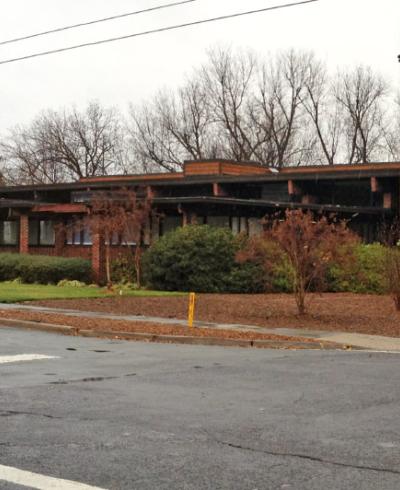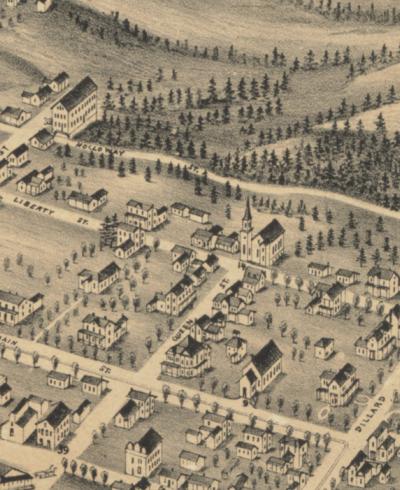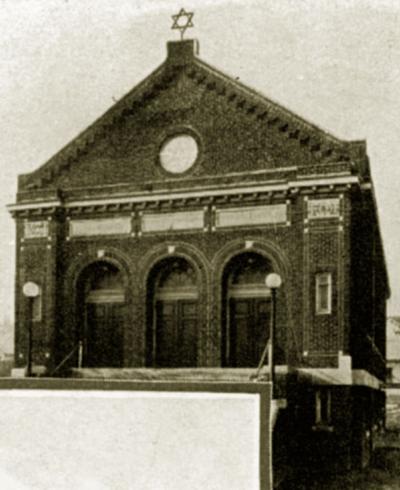Durham's oldest Jewish congregation had its origins in the purchase of a burial ground - a portion of the city of Durham's newly established cemetery, Maplewood.
In 1884, four of Durham's earliest Jewish settlers got together and bought 500 square feet of land from Durham's Maplewood Cemetery. The four men -- Jacob Levy, Samuel Lehman, Myer Summerfield and August Mohsberg -- must have foreseen that, sooner or later, their small community would need to bury its dead in accordance with Jewish tradition. In doing so, these Jews, all German born, acted on Jewish law, which dictates that prompt burial is among the faith's highest obligations.
They may not have known that the first death would be from among their own. Seven year-old Ida Levy, the daughter of Jacob Levy, died in 1888, four years after the group bought the land. Creating a cemetery -- followed by a burial society, or Chevra Kadisha -- was the Durham Jewish community's first collective act.
In 1887, Durham's first congregation, the Durham Hebrew Congregation, was formed. The group was Orthodox in tradition, and met in "a rented hall on Main Street." In 1896, the congregation dedicated its first Torah. Six years later, the Durham Hebrew Congregation was formally incorporated in North Carolina. In 1905, they purchased the former Congregational Church on Liberty Street, where it intersected with Queen Street.
Over this period, more than 230 people were buried in the old section of the cemetery along Morehead Avenue. The majority of these Jews were from Eastern European shtetels. They were, for the most part, traders and storekeepers, who came to town on the heels of its newest industry -- tobacco. Durham's dozen tobacco factories produced an urban clientele these Jews worked hard to serve. Though some of the earliest Jews, such as Moses Gladstein and Joseph Smolensky, worked in the factories, the majority were grocers, butchers, shoemakers, and furriers. Durham Jews dominated the retail clothing businesses in particular, and their shops dotted the downtown's white and black communities advertising the latest New York fashions. In this, Jews resumed their European roles as economic middlemen, said Jewish historian Leonard Rogoff.
When the City of Durham desired to extend Queen St. north, through the synagogue's property, the congregation hired architects Hook and Sawyer to design a new structure for them on the southeast corner of North Queen St. and Holloway St. It was at that time that the congregation took the name Beth El.
Per the synagogue's website, the congregation was Orthodox through the 1930s and 1940s, but grew more liberal over that time. In 1948, the congregation hired a Conservative rabbi.
The congregation constructed a new modern synagogue west of downtown, in Trinity Park, in 1957, where they remain as of 2011.
[Text in italics above is from the Durham Hebrew Cemetery Website, which has an excellent visual guide to the burials in the old Hebrew Cemetery.}




Add new comment
Log in or register to post comments.